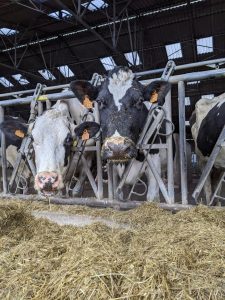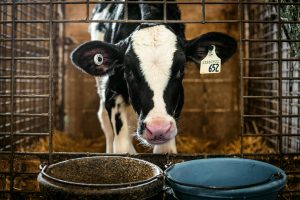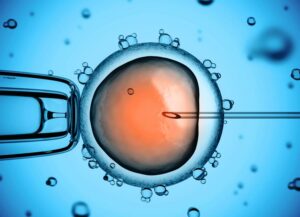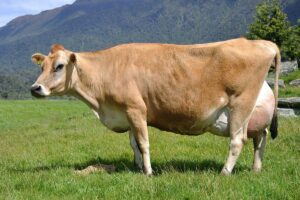Álvaro García
Lameness is a significant welfare and productivity challenge in dairy cattle, impacting not only the animal’s well-being but also farm efficiency. It is commonly associated with foot lesions that impair mobility, leading to reduced milk production, fertility issues, and overall herd health declines. Timely identification of lameness is crucial, as early intervention can prevent the progression of lesions and improve recovery outcomes. Traditional detection methods rely on human observers using mobility scoring systems, which, while widely used, are subject to variability due to observer fatigue, experience, and environmental conditions.
Recent advancements in automated imaging systems combined with machine learning algorithms offer a more objective, consistent, and frequent method for monitoring cow mobility without human bias. While 2D imaging systems have gained attention for their ability to assess gait and identify abnormalities, 3D imaging technologies are emerging as an even more detailed and comprehensive approach to analyzing movement and foot health.
Recent 2D research
A 2025 study by Siachos et al. evaluated a fully automated 2D imaging system for real-time lameness detection and foot lesion identification across multiple dairy farms in the UK. By comparing automated mobility scores with traditional human assessments, the study highlighted the high sensitivity and specificity of 2D imaging, particularly in detecting severe lameness cases. The system consistently provided accurate and timely assessments without being influenced by observer fatigue or bias. Additionally, the study demonstrated that tracking mobility changes over time is a major advantage of automated 2D imaging. This feature allows for early identification of cows at risk of developing severe lesions, enabling proactive management before conditions worsen. Another key finding was the system’s ability to distinguish different types of foot lesions with a high degree of accuracy, making it a valuable tool for both early intervention and herd-wide monitoring.
Comparing 2D and 3D imaging systems
Two-dimensional imaging, such as the system evaluated by Siachos et al. (2025), is commonly used in general photography. It captures images in height and width but lacks depth, making it more challenging to analyze complex shapes like a cow’s body. The system relies on machine learning algorithms to assess movement and detect gait abnormalities, offering a cost-effective, scalable solution for large-scale lameness monitoring. The key advantages of 2D imaging include:
- Affordability and ease of implementation.
- Consistent and real-time mobility scoring, reducing human error.
- High accuracy in detecting severe lesions and tracking mobility changes over time.
However, 2D imaging does have limitations, particularly in capturing the full complexity of movement. Since it relies on a single viewpoint, depth perception is limited, which may reduce its effectiveness in analyzing subtle changes in gait or limb positioning.
In contrast, 3D imaging technology reconstructs movement in three-dimensional space, offering a more precise and detailed analysis of how cows move. These systems use advanced cameras and sensors to capture movement from multiple angles, providing greater insight into posture, joint angles, and weight distribution—critical factors in detecting early-stage lameness.
Key advantages of 3D imaging over 2D systems include:
- Greater precision in movement analysis, capturing depth, orientation, and spatial dynamics.
- Improved assessment of foot and limb mechanics, leading to earlier detection of subtle gait abnormalities.
- Higher accuracy in diagnosing complex lesions, including those not visible in a single-plane image.
One major benefit of 3D imaging is its ability to analyze foot and limb angles in real time, allowing for a more comprehensive understanding of weight distribution and joint mechanics. This level of detail is particularly useful in early lameness detection, where minor gait changes may indicate developing issues before they become severe.
The study by Siachos et al. (2025) confirms that overall imaging technology can be a highly effective, cost-efficient solution for detecting severe lesions and tracking mobility changes over time. They provide valuable tools for lameness detection and management in dairy cattle. Both 2D and 3D technologies represent a significant improvement over traditional visual observation, which is subjective and prone to inconsistency. However, 3D imaging offers greater depth and precision, making it better suited for analyzing more complex movement patterns and detecting subtle abnormalities. In addition, modern 3D systems incorporate AI-driven interpretation, enhancing their ability to detect lameness automatically and consistently. These AI-enhanced systems can analyze gait patterns, limb positioning, and weight distribution in real-time, reducing the reliance on human expertise and improving early detection of mobility issues.
The decision between 2D and 3D systems will depend on farm needs, budget, and the level of detail required for lameness management. While 2D imaging provides a practical and scalable solution, 3D imaging with AI-assisted analysis represents the next technology in fully automated, high-precision lameness detection.
References
Siachos, N., Griffiths, B. E., Wilson, J. P., Bedford, C., Anagnostopoulos, A., Neary, J. M., Smith, R. F., & Oikonomou, G. (2025). Evaluation of a fully automated 2-dimensional imaging system for real-time cattle lameness detection using machine learning. Journal of Dairy Science. Advance online publication.
© 2025 Dellait Knowledge Center. All Rights Reserved.









